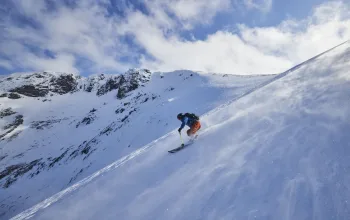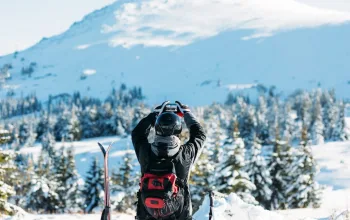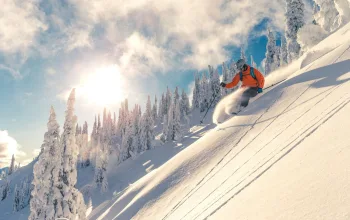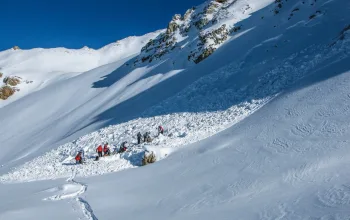According to the experts at the International Snow Training Academy ISTA, avalanches are not a twist of fate. Practitioners change, habits change – risks don’t, which is why we need a new approach to staying safe in the backcountry.
Dominique Perret, CEO and founder of ISTA – the International Snow Training Academy – has dedicated the last 18 months pouring a career’s worth of experience into the first internationally recognised avalanche training programme.
Over 40 experts spanning 9 countries and 3 continents in the areas of education, sport psychology, transfer of knowledge, nutrition, meteorology, snow science, risk management and rescue methods, as well as mountain guides and ski instructors, were involved in the development of this project intended to prevent risks in the mountains and to increase the freedom, enjoyment and safety of backcountry enthusiasts.
Dominique Perret believes it’s vital that backcountry enthusiasts begin to focus on prevention rather than placing the emphasis on action in the event of an avalanche:
“Despite the increasing number of backcountry recreationists, training opportunities, both in Switzerland and abroad, vary from country to country and mainly cater to advanced amateurs and professionals. ISTA’s training program is intended for the general public and is delivered by affiliated instructors and guides. The goal is not to provide extra equipment, but rather the knowledge and skills required to assess and prevent risk.”
The basics
1. Get trained
Even with all the rescue gear in the world, without proper training you are unlikely to be able to use it to save your life, and the best way to get it is from experts who have condensed the vital knowledge and information you need. It’s not about going back to school and spending countless hours studying – with just a couple of days of practical and theoretical training, you will be able to perform the following vital skills:
Implement the risk assessment process
Identify favourable and unfavourable terrain
Understand rescue techniques
Use rescue gear
Implement the avalanche rescue procedure
Use the HFSA© system to assess mental, medical and energy-related risk factors

2. Get informed
Observing and understanding elements in three principal areas – weather, terrain and snowpack – is the foundation of risk management. You can find clear indicators from weather forecasts, avalanche bulletins and ski area guest information services, but don’t rely on these third-party sources. We have become less attentive to the signs nature gives us due to the modern way of life. Relearn how to use the powerful tools of perception and observation to study the environment.
3. Get the gear!
It is critical to align the level of risk you take with your skill level and to choose rescue gear accordingly. Always keep in mind that being over-equipped can have a negative effect by creating a false sense of security and leading you to take additional risks. There’s no use in being over equipped: it’s better to remain aware of your skill and knowledge level and never lose sight of the fact that rescue gear should never have to be used.

But if prevention does fail, and you find yourself in a rescue situation, vital gear to be found in your backpack should include a transceiver, a probe and a shovel. Practice to be efficient!
4. Observe and monitor the evolving situation!
Observing the environment on the mountain is an ongoing process, which doesn’t stop after the initial assessment. There can be very visible warning signs that you must recognise throughout your project. These signs can include:
Wind
Temperature
Avalanche activity
Quantity of new snow
Precipitation
Visibility
Slope incline and aspect
5. Adjust Your Plan!
Continuing your project despite numerous negative indicators could seriously increase your chances of being exposed to imminent danger. Develop your ability to adjust your plan based on the conditions: weather, visibility and avalanche warnings. Equally as important as the conditions, are the skills and physical and mental state of those with you. Monitor for signs of change in any of these areas to determine how to proceed.
6. Never ski alone!
Inform people of your project!
Make sure that the objectives of the project and the risks are clearly understood and accepted by everyone in the group.
7. Learn proper descending practice
Descend one at a time on the slope. On both ascent and descent keep a safe distance between group members. Adjust your speed to the conditions and stop only in safe areas. If you have any doubts, hold off or adjust your plan! Respect the signage, the wildlife and vegetation, as well as fellow backcountry enthusiasts.
The progressive ISTA training courses are currently available in 28 resorts across Switzerland and 15 resorts in Italy with release in Austria, Germany, Spain and North America scheduled for 2016/17. To find your nearest ISTA center or guide, visit ista-education.com
















